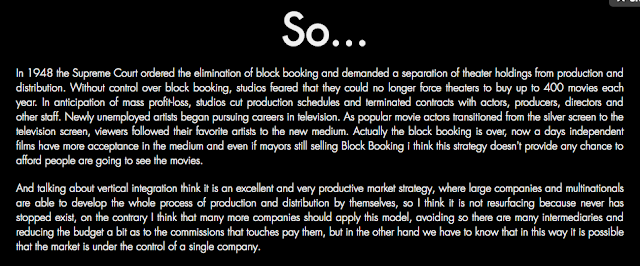The Two Biggest Film Industries
-Hollywood No Longer Shines Alone-
Monday, October 10, 2016
Friday, October 7, 2016
A neglected treasure of world cinema: Benshi (Japanese film before Akira Kurosawa) By Natalia Reyes
BENSHI !!
The benshi or katsuben were one of the most important figures in the early days of cinema in Japan.Its initial role was to narrate foreign films that projected for an audience that could not understand the signs, as they were not subtitled in Japanese, but not only was merely foreign films, but also to Japanese movies.
Benshi also reproduce the dialogues of all characters and even imitated the sounds.
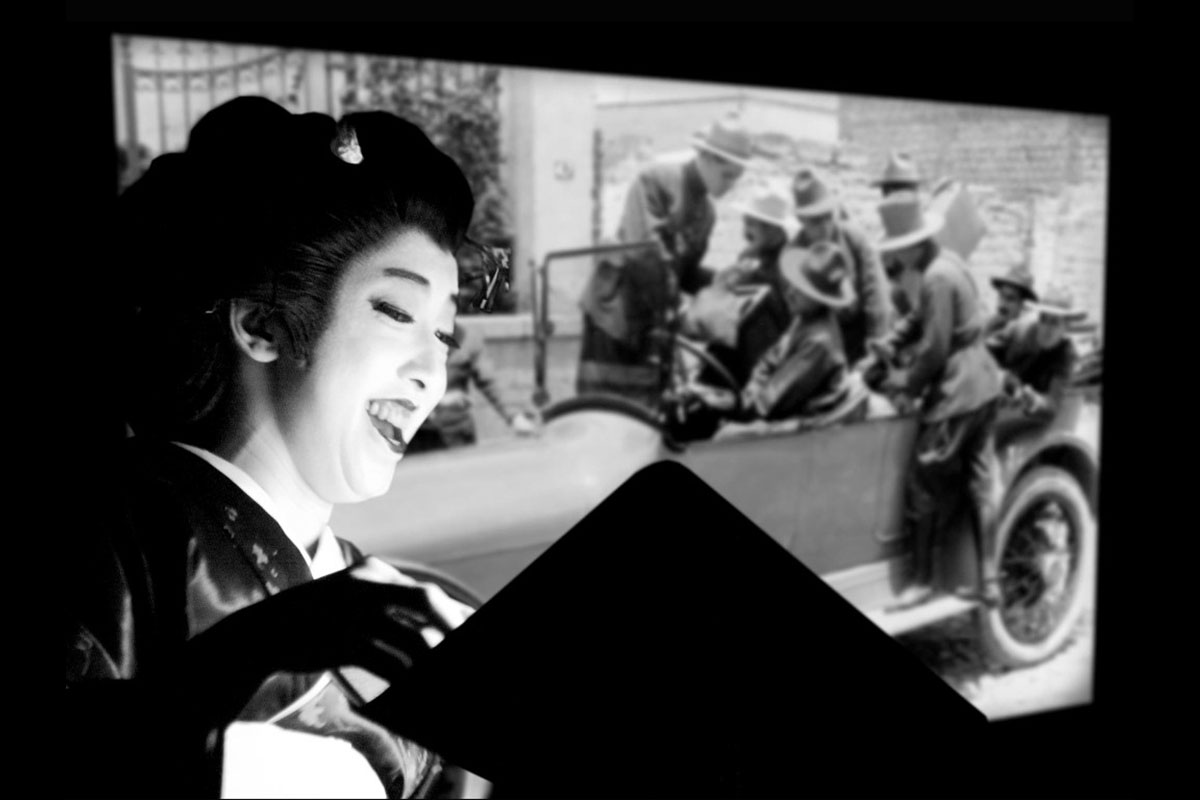
The benshi
were not a result of motion pictures. They did not come about because the Japanese masses
needed motion pictures and motion picture technologies explained to them. In the early twentieth century the illiteracy rate was still very high and therefore in many countries the figure of someone who was in charge of reading the signs of the film became popular.
 |
| BUNRAKU |
| e-TOKI |
 |
| KABUKI
The benshi, were located on the left side of the stage behind a table, a place that not even left in their time of greatest popularity, as always it was understood that the focus of visual attention had to be the screen (oasiones also try to draw attention for example one specializing in films of Chaplin comment benshi reached the point of dressing like him to foster that relationship).
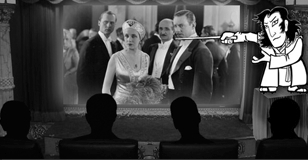  |
However, the films began to become complex, the duration was increasing and, gradually, they were daring to narrate stories in greater depth. The role of benshi was no longer merely descriptive, but should also be explanatory. The problem was not only understand the signs of the films and an increasingly elaborate, but understand Western ways that appeared in the films narrative system.
 |
| The Kiss 1896 |
An example of this was the movie: Kiss of Edison in 1896, which was considered highly immoral for its content, but the intervention of censorship by the authorities was avoided thanks to the explanation of benshi, who said that, what they saw it was a typical habit of the West
There were two ways to approach the art of setsumei (name with which the narrative that made the films known):
- Yamanote style: more realistic and objective understanding the role of benshi like a mere explainer of what was happening on the screen.
- Shitamachi style: more melodramatic and stylized.
The first was obviously more appropriate for foreign films while the second fit more with own productions. So it was not uncommon for the most professional benshi to specialize in a particular type of films: films of time (jidai-geki), contemporary films (gendai-geki) or foreign productions.
On the other hand, the style of each benshi changed depending on whether working in rural or city areas, even to adopt the accent of the region to work. Thus, for the public of every people it was as if the famous Hollywood actors speak with his accent, making closer to those famous international figures
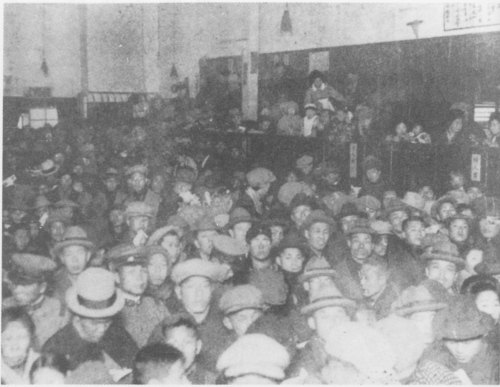
In 1927 it transpires that had benshi 6,818 (of which 180 were women curiously). His popularity reached such levels that in Japan people did not go to see a movie attracted by the name of a popular actor, but by the benshi that interpret.
How does all this affect the Japanese production of the time? From the moment that viewers gave priority to benshi on films, Japanese industry was conditioned by this circumstance. Japanese scriptwriters and directors made their films not thinking them as autonomous works that viewers would see for themselves, but as films that would be accompanied by an explanation of a benshi.
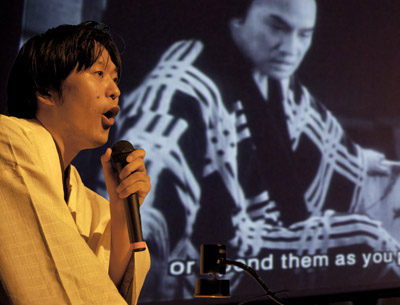
Prompting even in the 20s the Japanese film narrative progressed in a somewhat slow. It did not need to understand the films themselves therefore not seen the need to develop an audiovisual grammar to make them fully understandable films to viewers. On the contrary, the rapid realization of films was encouraged, knowing that benshi narrative fill gaps or errors.
A minority of filmmakers and moviegoers began to show their dissatisfaction with the system when foreign films palpably showed that Japanese cinema was lagging behind the rest of the world. However with the advent of sound, the reign of Benshi began to fall. The attractiveness of this new system ne movies, cuasaba curiosity in people and attracted them and convicting them of going to see them.
The popularity of the Bnshi faded with the introduction of sound to accompany film. Ironically, given the historical dominance of the Benshi profession during the silent film era, today the most celebrated Benshi is a woman, Sawato Midori. Midori has worked as a professional Benshi for the past twenty years, and is now the only person in Japan who earns a living in this field. Dym notes that, when Midori was asked what is the most important role of the Bneshi today, she replied, 'Communicating the spirit of the films made in the past to today's audiences'
A minority of filmmakers and moviegoers began to show their dissatisfaction with the system when foreign films palpably showed that Japanese cinema was lagging behind the rest of the world. However with the advent of sound, the reign of Benshi began to fall. The attractiveness of this new system ne movies, cuasaba curiosity in people and attracted them and convicting them of going to see them.
The popularity of the Bnshi faded with the introduction of sound to accompany film. Ironically, given the historical dominance of the Benshi profession during the silent film era, today the most celebrated Benshi is a woman, Sawato Midori. Midori has worked as a professional Benshi for the past twenty years, and is now the only person in Japan who earns a living in this field. Dym notes that, when Midori was asked what is the most important role of the Bneshi today, she replied, 'Communicating the spirit of the films made in the past to today's audiences'
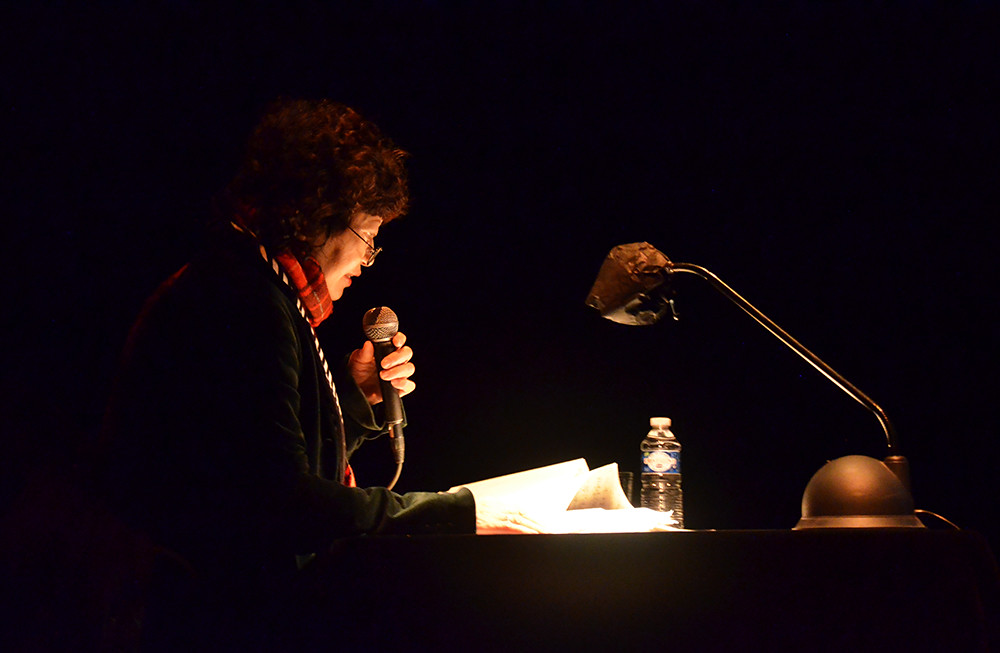
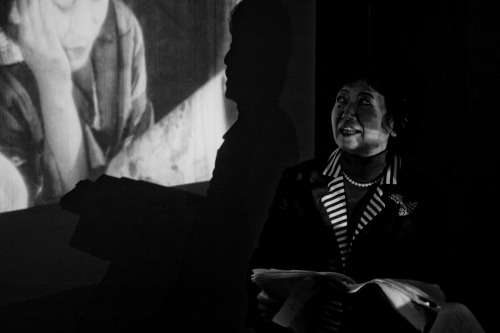
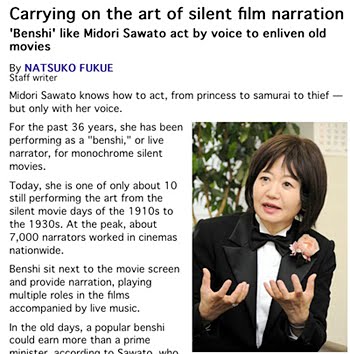
CURIOUS FACTS!
- No matter which film played or which benshi narrated, the film hero was usually named Jim, the heroine, Mary, and the villain, Robert.
- in 1936, there were 5151 registered benshi. In 1937, there were 3726, and by 1939, that number had fallen to 1302.
- Of the films shown, in 1920 4588 reels were American film, 231 European, and 1914 Japanese. In 1925, 9679 were Japanese, 8873 American, and 1023 European.
- In 1918, the smallest theater seated 244, and the largest theater seated 4221.
- The best theaters hired the prettiest female ushers. Trade journals circulated that compared the ushers’ looks and commented on their love lives with theater patrons.
- Day laborers received an average salary of 59 sen/day. First-year elementary teachers: 20 yen. Beginning bankers: 40 yen. A particular 13-year-old girl benshi: 80 yen. Benshi Somei Saburo’s signing bonus: 3000 yen.
- For a time, audience seating in some theaters were gender segregated to protect virtuous women from wandering hands in the dark theaters.
- In 1925, film represented 71% of mass entertainment.
- Some areas banned certain words, such as masuizai (anesthesia), kissu or seppu (kiss), and dorobo (burgler). These were replaced with nemuri (sleeping medicine), atsuki kuchi zuke (hot mouth touching), and kano akkan (that scoundrel).
- The phrase, “smelled like butter” (batta kusai) was used to describe films too foreign in content and technique.
- Somei Saburo simply inserted the English word “and” into his setsumei and fooled the audience into thinking he was educated and could speak English.
- Benshi sometimes made fun of actors on screen by commenting on their physical appearances.
- 1935 marked the sound transition in film: 78% of all theaters were wired for sound, the majority of films produced were sound films, and the top 10 films were all “talkies,” whereas in 1934 eight were silent and six were talkies.
- The audience felt that they were on intimate terms with their favorite benshi and often called out to them in the theater by nicknames such as “Big Mouth” or “Fish Face.” (Anderson and Richie 24)
- The phrase “spring, ah, spring” was commonly quoted by benshi during lovers’ scenes in films.
- To supplement their income, some benshi put gratuity boxes near their podium where fans, especially female ones, left money, often as marks of affection.
LEAR MORE ABOUT JAPAN ORAL TRADITION OF STORYTELLERS (Kabuki and Benshi)


Shouwa Genroku Rakugo Shinjuu

- http://aboutjapan.japansociety.org/content.cfm/a_brief_history_of_benshi
- http://www.infoplease.com/cig/movies-flicks-film/benching-benshi-japans-illustrious-century.html
- http://courses.hamilton.edu/documents/Dym.pdf
- https://en.wikipedia.org/wiki/Benshi
- http://www.bfi.org.uk/news-opinion/news-bfi/video/video-yasujiro-ozu-art-benshi
- http://www.japanesestudies.org.uk/reviews/2005/Shimoda.html
German Federal Film Board- María José Cruz
It is really important to support the film
industry, that’s why Film Boards are vital for enhancing the economy of this
industry. The Government should support the national film industry and help
them, so their projects are not only a success nationally, but worldwide. Down
below, there will be some information about how the is the Germany´s film
industry financed.
The German Federal Film Board (FFA) is a public
institution that supports the promotion and production of the German cinema. It
also is in charge of improving the structure of the national film industry and
it works to align and coordinate film support measures by the Federal Government
and regional states.
The institution was founded in 1968 as an
answer to the deterioration of the German´s film industry in that decade and
following the lead of France and Italy, countries that had established systems
in order to support their national film industries.
The FFA support films at all stages of
production (so it can fund projects from script development to the production
stage and its distribution). The FFA has also other duties like the
preservation of film heritage, the promotion at an international level of
German cinema, it has to promote film education and to compare, analyze and
publish data from the German film, exhibition and video industries.
The FFA has a staff of 55 people. The CEO of
the institution is Peter Dinges and his deputies are Frank Völkert and
Christine Berg. The Administrative Council, which has 36 members, is in charge
of the main issues in the FFA´S area of responsibility. There is a granting
Committee that is responsible of choosing to which film project are the funds going.
The German Federal Film Board is financed by
the “Film Levy” that following the German Film Law (FFG) establishes that
companies exploiting feature films have to pay a legally proportion of their
revenues to the FFA. It must be paid by exhibitors, the amount is calculated
per screen and based on the annual net resulting from the tickets sold; the
video industry, it ranges within 1.8% to 2.3%, also calculated on the annual
net from the revenues; and the broadcaster: for the public ones, the amount
they have to pay is based on their expenditure for airing feature films; and
for the private ones, with free to air channels pay based on their net
advertising turnover. Finally, the programme providers pay a not scaled of
0.25% of their net turnover from their subscription contacts. The annual budget
of the institution is around 76 million Euros.
The German Federal Film Fund (DFFF) is
administrated by the FFA, created in 2007. Its funding consists of a non-repayable
grant to film producers and awarded for films, documentaries and animated
pictures. This funding does not apply for television projects.
The FFA supports co-production with France and
Italy. Germany has a supplementary agreement called “Minitraité” established
with the Centre National de la Cinematographie (CNC) in addition to the German-
French Film Agreement. On the other
hand, the FFA and the Ministry of Cultural Heritage Activities and Tourism (MiBACT)
agreed to support the co-development of film projects.
 The importance of these Film Boards is to
support the national industry, in order to promote the production of films with
good quality that can reach the widest audience it can get. For example, the
movie Look who´s back (David
Wneddt,2015) funded by the FFA with 1.432.040 Euros was listed as one of the
German submissions for the Foreign Language Film at the 89th Academy
Awards, it was not selected though. But the point is that as more support the
Government gives to these projects, the more possibilities there are for, in
this case, German’s films to be known and have even more profits.
The importance of these Film Boards is to
support the national industry, in order to promote the production of films with
good quality that can reach the widest audience it can get. For example, the
movie Look who´s back (David
Wneddt,2015) funded by the FFA with 1.432.040 Euros was listed as one of the
German submissions for the Foreign Language Film at the 89th Academy
Awards, it was not selected though. But the point is that as more support the
Government gives to these projects, the more possibilities there are for, in
this case, German’s films to be known and have even more profits. An example of the possibilities that the co-production
agreements allow is the movie Mustang (Deniz
Gamze Ergüven, 2015) an international co-production between France,
Germany and Turkey. The FFA total amount funding was 170.000 Euros. This movie
has been nominated for the Best Foreign Language Film of the Year in the
Academy Awards (2016), nominated for the Golden Globes for the Best Motion
Picture – Foreign Language and it won the Europa Cinemas Label as Best European
film in the Director´s Fortnight section in the Cannes Festival, and it has
been nominated and won other awards.
An example of the possibilities that the co-production
agreements allow is the movie Mustang (Deniz
Gamze Ergüven, 2015) an international co-production between France,
Germany and Turkey. The FFA total amount funding was 170.000 Euros. This movie
has been nominated for the Best Foreign Language Film of the Year in the
Academy Awards (2016), nominated for the Golden Globes for the Best Motion
Picture – Foreign Language and it won the Europa Cinemas Label as Best European
film in the Director´s Fortnight section in the Cannes Festival, and it has
been nominated and won other awards.
Link to the trailer:
References:
-http://www.ffa.de/ffa-overview-1.html
-https://en.wikipedia.org/wiki/Cinema_of_Germany#German_Film_Academy
-https://books.google.com.co/books?id=QQsRlg7zjDwC&pg=PA99&lpg=PA99&dq=german+federal+film+board+1968&source=bl&ots=2KI4difCoV&sig=u5rkDq8ZtnkGmk4wmlymzDlUL5c&hl=es&sa=X&ved=0ahUKEwiYj6j46snPAhVD8j4KHbuZBDAQ6AEIIjAB#v=onepage&q=german%20federal%20film%20board%201968&f=false
-http://www.cineuropa.org/dd.aspx?t=dossier&l=en&tid=1365&did=147062
-http://www.dfff-ffa.de/en.html
-http://www.imdb.com/title/tt3966404/awards
KODAK (By María Fernanda Díaz Bernal)
KODAK (By María Fernanda Díaz Bernal)
Kodak (The Eastman Kodak Company) is an american technology company that it's focused on imaging products, with photography as its main topic. The company is headquartered in Rochester, New York, United States and incorporated in New Jersey.
HISTORY
In 1884, the american inventor George Eastman patented photographic film stored in a roll. It only took him four years to perfect the first camera to take an advantage of his creation.
In 1892, the company was founded in Rochester, New York, United States. Its name comes from three principal concepts that Eastman used in order to create the name: it should be short, easy to pronounce and not resemble any other name or be associated with anything else.
First Kodak camera
In 1900, it was launched The Brownie camera with a price of $1. That brought photography to the mass market. The basic cardboard box took square image on 2 ¼ film.
In 1920, an “Autographic feature” gave a means for recording data on the margin of the negative at the time exposure. This feature was supplied on all Kodak cameras except for a box camera designed for making panoramic pictures.
Also in 1920, Tennessee Eastman was established as a wholly owned subsidiary. The manufacture of chemicals, such as asacetyls, needed for Kodak’s film photography became the main purpose of the company.
In 1930, the company launched on the Dow Jones Industrial Average Index, where it remained for 74 years.
In 1932, at age 77 George Eastman died because he took his life with a gun shot.
In 1935, Kodak introduced a color reversal stock for movie and slide film, called Kodachrome.
In the period covered by 1949 and 1956, Kodak introduced the retina series 35mm camera.
In 1959, Kodak introduced the first automatic Brownie camera called The Starmatic Camera, which sold 10 million units over the next five years.
George Eastman and Thomas Edison
In 1963, Kodak introduced and inexpensive, easy to load, point-and-shoot camera called Instamatic.
In 1969, the film used on the Apollo 11 missions was produced by Kodak. Each double-perforated 70mm roll could capture 160 colour pictures or 200 black and white images.
In 1975, an engineer from Kodak named Steven Sasson created the 3.6kg device that stored images on cassette tape, had a 0.01mp resolution and took 23 seconds to expose each image. This made Kodak the first company to build a working digital camera.
In 1976, a researcher called Bryce Bayer created the Bayer Pattern color array (CFA). The order in which dyes are placed on an image sensor photosite is still in use nowadays. The basic technology is still the most commonly used of its kind to date. Also, during this year, Kodak introduced the first Kodamatic, an instant picture camera, using a similar film and technology to that of the Polaroid company. In addition, Kodak had a 90% market share for photographic film and 85% share of camera sales in the United States.
In 1986, some scientist of Kodak invented the world’s first megapixel sensor, capable of recording 1.4 million pixels and producing a photo quality 12.5 com x 17.5 cm print.
In 1994, Apple launched one of the first consumer digital cameras, the QuickTake. It was designed by Kodak and it currently had been released months before Apple’s version in Japan under its own name. The camera took photos at a resolution of 640 by 480 pixels.
In 2003, Kodak introduced the Kodak EasyShare LS633 Digital Camera, the first camera to feature an AMOLED display, and the Kodak EasyShare Printer Dock 6000, the world’s first printer-and-camera dock combination.
In 2005, in the United States Kodak was the largest seller of digital cameras, with revenue reaching $5.7 billion. By 2007, it had fallen to fourth place by 2010 to seventh.
ECONOMY OF KODAK
The film industry was wildly successful for decades and that it’s why Kodak was so single-mindedly set on protecting its core business. At its top point, about 70% of the United States film market, buyer or otherwise, was locked up for Kodak, and the company had a strong international distribution as well. Kodak was selling a lot of film and it was making a lot of money.
Kodak had a huge success due to its advertising campaigns. The company successfully persuade families to become archiver of those airy moments, which could be captured for the eternity in a photograph caught on film. When they had an strong market of consumers, Kodak used its campaigns to make people use it products.
In 1962, Kodak employed 75.000 people and earned more than $1 billion in United States sales. In an industry that was almost their own creation, they had a huge success and an incredible position over more than 70 years. They achieved that due to their focus on selling inexpensive cameras to keep consumers buying their films. The most important thing to Kodak was to protect their interest in film photography.
KODAK AND COLOR
In 1935, Kodachrome was introduced, followed by Agfacolor in 1936. They were designed primarily for amateur home movies and slides. These were the first films of the integral tripack type, coated with layers of differently color sensitive emulsion, which is usually what is meant by words “color film” as commonly used.
The first color negative films and corresponding print films were modified versiones of these films. They were introduced around 1940 but only came into wide use for commercial motion picture production in the early 1950’s. In United States, Eastman Kodak’s Eastmancolor was the usual choice. (Taken from Wikipedia https://en.wikipedia.org/wiki/Color_motion_picture_film)
Kodachrome came in every format - 8mm, 16mm, and 35mm, 120, 116, 828- and it facilitate the creation of color movies and rich color photos in print publications.
The Kodachrome process — in which three emulsions, each sensitive to a primary color, are coated on a single film base — was the brainchild of Leopold Godowsky Jr. and Leopold Mannes, two musicians turned scientists who worked at Kodak's research facility in Rochester, N.Y. Disappointed by the poor quality of a "color" movie they saw in 1916, the two Leopolds spent years perfecting their technique, which Kodak first utilized in 1935 in 16-mm movie film. The next year, they tried out the process on film for still cameras, although the procedure was not for the hobbyist: the earliest 35-mm Kodachrome went for $3.50 a roll, or about $54 in today's dollars. (Taken from http://content.time.com/time/arts/article/0,8599,1906503,00.html)
Bibliography:
Fujifilm: Innovation and Corporate History
Fuji Film Holdings
Corporation is a photography and imaging multinational. It's principal
activities are the development, production, selling and service of colored
photo films, digital cameras, paper, chemical products, screens, printers and
many more cool stuff. Their HQ are located in Tokyo, Japan.
Fuji Photo Film Co., Ltd.
was founded in
1934 as a result of the
split-off of a previous Japanese company, Dainippon Celluloid Company. The
first years of Fujifilm were tricky, their products were way to expensive,
taking into account that they were not really high quality, and it turned out
to be cheaper for the client to import.
Fortunately, they were
able to prove their research and improvement in
1936, after they released
their first film and also their first motion picture negative film, the last
one not so easy to produce.
The company continued
researching and expanding until Japan entered WWII in
1939, at this point, all
of their services were aimed for the military so the rest of the people had to
wait.
The infraestructural
damages war produced in two of their factories, led to some improvements in the
company, boosting the color research and finally, in
1948, allowing them to
produce their first color film.
Fuji film's international
market continue expanding and were able to produce in larger quantities
(finally in a competitive way with the Western companies) thanks to some
licensing agreements with Eastman Kodak, however, their struggle for their not
so good quality was still in few terms. In
1952, Fujifilm introduced
it's first amateur roll film and in
1958, the Fuji Photo Film
do Brasil Ltda. was stablished (obviously in Brazil), demonstrating the
company's international intentions. During this decade, also, Fujifilm reached
a lot of exports agreements in different continents.
By the 60's, Eastman Kodak
was the biggest developer in the market and it's dominance forced the other
companies to adjust their systems to the one Kodak used, this included
Fujifilm, which saw it's growing slowed. In
1965, Fuji Photo Film
U.S.A., Inc. was stablished in New York State, from this point, Fujifilm
managed it's market in the United States. In
1970, Kodak held almost
the whole U.S. market, but Fuji's color films were already faster than Kodak.
By the late 80's, Fujifilm
was doing pretty good, with presence in Europe, the United States, South
America and Asia principally. Despite the traditional market was indifferent,
Fujifilm discovered a new segment of consumers, one that was all about instant
photography.
1986, Fujifilm introduced
the world's first one-time-use recyclable camera, QuickSnap. Their success was
being, nationally and internationally, huge till the point where they become
the number one camera producers in
1992.
Fujifilm best years were in
the early 90's, when their sales kept breaking records until 1992, in part
because of the economic recession in Japan.
Fujifilm also works in the
development of medical equipment since the 80's (for example, the Digital
diagnostic X-ray imaging system: FCR, in 1983). In
1999, they produced
Sapientia, a digital endoscope system, which allows to see live in a screen
footage taken from inside the patient.
Finally, in
2013, as a subsidiary in
Colombia, established FUJIFILM COLOMBIA S.A.S
- http://www.fujifilm.com/about/history/corporate_history/
- http://www.fujifilm.com/about/history/innovation_history/#content7c
- http://www.fundinguniverse.com/company-histories/fuji-photo-film-co-ltd-history/
- https://es.wikipedia.org/wiki/Fujifilm
Nicolas Rincon Diaz
NATIONAL FILM BOARD OF CANADA
By: Danna Valentina Rocha
The National Film Board of Canada (NFB) is an agency of the Government of Canada within the portfolio of the Canadian Heritage Department. Its principal mandate is “to produce and distribute and to promote the production and distribution of films designed to interpret Canada to Canadians and to other nations”; but this mandate has been revised many times over the years to take into account the changing audiovisual environment and financial and social situation.
But, ¿When it was created? ¿Which are it missions and activities? ¿Why it is important for the country?
“The National
Film Board has a unique role in providing Canadians with innovative,
challenging Canadian content that would otherwise not be available. With
increased competitiveness and market pressures and with the rapid and
far-reaching impacts of the digital revolution, the private sector in Canada is
unable to take the creative, financial and technological risks that must be
taken for Canada to remain at the forefront of the cultural industry. By
testing the creative possibilities of new technologies, tackling tough issues
of concern or enabling distribution into remote communities, the NFB provides
Canadians and the Canadian industry with new opportunities and contributes to a
vibrant Canadian culture and heritage”.
Well, let’s
talk about it history.
In 1938, the
Government of Canada invited John Grierson, a British pioneer in documentary
film, to study the film production of the country. Until this moment, the
Canadian Government Motion Picture Bureau had been the major film producer. But
in 1939, the National Film Commission was funded, based in the National Film
Act of 1939, in which were included the results of the study of Grierson. Later,
the name was changed to National Film Board of Canada (NFB). The creation of
this agency is the central event in the history of Canadian cinema.
By 1945, the
National Film Board of Canada (NFB) had turned into one of the largest film
studios in the world with more than 500 films released and 2 series about
Canada in the war (1940).
In this same
year, John Grierson resigned and was replaced by Ross McLean, who faced
considerable difficulties. Budgets and staff was reduced and the NBF came under
attack for allegedly harboring left-wing subversives and as holding monopoly
that threatened the livelihoods of commercial producers. He couldn’t fix the
problems, so Arthur Irwin came in 1950 to calmed the storm initiating a new
National Film Act.
The National
Film Act of 1950 included the mandate that I previously said. Besides, it
removed any direct government intervention into the operation and
administration of the NFB. Also, during the postwar decade, production expanded
into new areas: dramatics films were made for the first time, new techniques
were explored in animation, and the information film and production for TV were
initiated.
One of these improvements
was the fact of including French-speaking films. In the beginning, the NFB was an
English-speaking institution and it was located in Ottawa. But, in 1947, the
screenwriter Jacques Bobet was hired and he started to worked with the French
Unit appointing to produce French versions films in 1951; and, in 1964, a
French production branch was finally established, after many protests of young
Québec filmmakers. In 1956, the NFB’s headquarters was relocated from Ottawa to
Montreal.
The mandate
for the National Film Board was refined in 1967 after the creation of the Film
Development Corporation (Telefilm Canada) and Challenge for change; two projects
that promoted the development of film productions in Canada.
In the early
1970s, the NFB began a process of decentralization, in which they opened many regional
productions centers across the country helping people to make they own films
wherever they are.
During 1970s
and 1980s, the NFB produced many series of vignettes which became popular
because of their cultural depiction of Canada and because they represented its
changing state. They became so popular that began airing in CBC and other
Canadian broadcasters.
The NFB
budget was cut again in 1996 forcing it to close some departments and to lay
off some staff.
In 2006 was
the 65th anniversary of NFB animation. in October 2009, the NFB
released a free app for Apple’s iPhone allowing users to watch thousands of NFB
films in HD; in 2010, was released an iPad version of the app.
Beginning May
2, 2014, the NFB's 75th anniversary was marked by such events as the release of
a series of commemorative stamps by Canada Post, and an NFB documentary about
the film board's early years, entitled Shameless Propaganda.
One of the priorities
of NFB is the animation and it has amazing productions in this field since
1941. The award winners’ animations are:
- Bob’s Birthday (1993, David Fine
& Alison Snowden)
- The Danish Poet (2006, Torill Kove)
- Madame Tutli-Putli (2007, Chris Lavis
& Maciek Szczerbowski)
- Special Delivery (1978, Eunice
Macaulay & John Weldon)
- Gloria Victoria (2012, Theodore
Ushev)
- Wild Life (2011, Amanda Forbis &
Wendy Tilby)
- Sunday (2011, Patrick Dayan)
- Ryan (2004, Chris Landreth)
- Me and My Moulton (2014, Torill Kove)
All the
information about the agency is in the official page https://www.nfb.ca where people can watch all
the contents, the films, the documentaries, the animations and a lot of
information about their productions.
REFERENCES
- http://onf-nfb.gc.ca/en/about-the-nfb/organization/role/
- http://onf-nfb.gc.ca/en/about-the-nfb/organization/mandate/
- https://www.nfb.ca/history/
- https://www.nfb.ca/animation/
- https://en.wikipedia.org/wiki/National_Film_Board_of_Canada
- http://www.thecanadianencyclopedia.ca/en/article/national-film-board-of-canada/
Subscribe to:
Posts (Atom)



